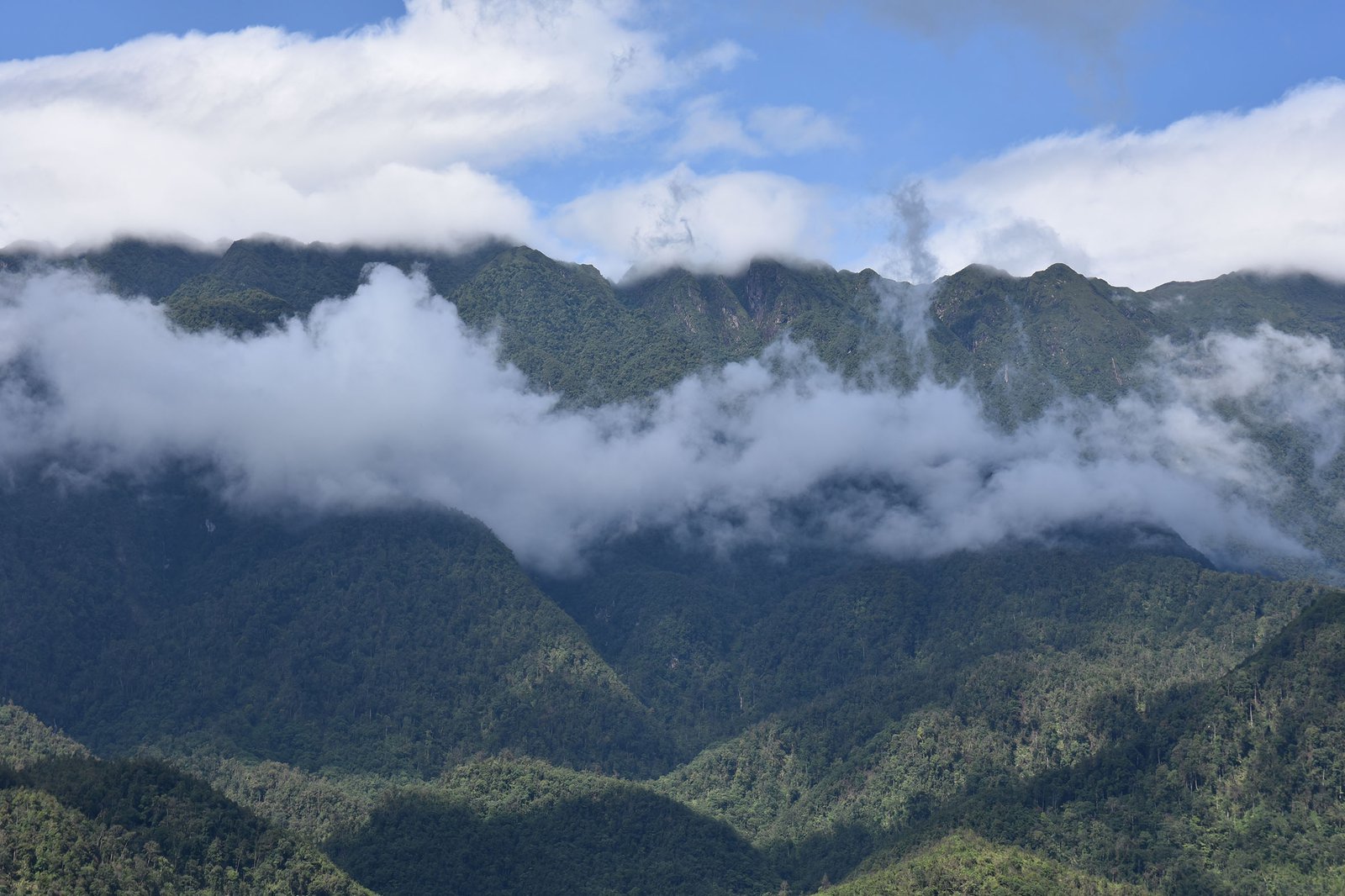Is a deadly disease impacting amphibians on Vietnam’s highest mountains?
Scientists from the Australian Museum, Indo-Myanmar Conservation and ZSL London Zoo search for frogs and the world’s worst wildlife disease in the mountains of northern Vietnam.

Hoang Lien Range, northern Vietnam, at dusk.
Image: Jodi Rowley© Australian Museum
The topic of disease is front and centre in the news at the moment. But while the focus is on diseases that can spread among humans, amphibians have been facing a pandemic of their own for decades, and the disease is called chytridiomycosis.
Chytridiomycosis is caused either by the amphibian chytrid fungi Batrochochytrium dendrobatidis (Bd) or Batrochochytrium salamandrivorans (Bsal). Chytridiomycosis has been implicated in the declines and disappearances of hundreds of amphibian species, and recent information suggests that both Bd and Bsal originated in Asia. So how are amphibians faring there?
We set out to investigate the prevalence of chytrid infection in Vietnam’s Hoang Lien Range, an amphibian diversity hotspot and home to many species already threatened by habitat loss, including several Critically Endangered species. If these unique amphibians are also being threatened by disease, it would be an even more grim prognosis.

The Critically Endangered Sterling's Toothed Frog (Oreolalax sterlingae).
Image: Jodi Rowley© Australian Museum
Although there have been previous efforts to sample for Bd in the Hoang Lien Range, we focussed on previously unstudied higher elevation areas. It is these higher, cooler spots where Bd has thrived and had particularly devastating results for amphibians elsewhere in the world. For the first time, we also investigated the presence of Bsal in the Hoang Lien Range.
The test for Bd and Bsal first requires a sample of the adult amphibian’s skin or tadpole’s mouthparts, which is obtained with a cotton swab, picking up the DNA of Bd or Bsal along the way if it is present. It is this DNA that will then trigger a positive result in molecular tests.

The team swabs a frog for Bd and Bsal infection in the Hoang Lien Range, northern Vietnam.
Image: Chris Portway© Australian Museum
Our surveys spanned a five-year period and all seasons, and we tested 601 samples from 40 frog species found on the Hoang Lien Range. Thankfully, only 1% of samples were positive for Bd and none were positive for Bsal, and no frogs showed any signs of disease. Our results are certainly good news for the frogs of the Hoang Lien Range.
The Hoang Lien Range has such a high diversity of amphibian species, including highly threatened, range-restricted species and they remain under great threat, particularly from habitat loss. As a result, continued monitoring of the amphibians and the presence of disease should continue. This will allow us to rapidly implement any conservation actions needed before it’s too late.
Christopher Portway, Research Assistant, Herpetology, Australian Museum Research Institute
Dr Jodi Rowley, Curator, Amphibian & Reptile Conservation Biology, Australian Museum Research Institute & UNSW Sydney
Nguyen Thanh Luan, Scientific Officer, Asian Turtle Program of Indo-Myanmar Conservation
Benjamin Tapley, Curator of Reptiles and Amphibians, Herpetology Section, ZSL London Zoo
Acknowledgements
We are extremely grateful for the support of Nguyen Huu Hanh, Vice Chief of Lao Cai FPD who arranged the office’s work at Bat Xat. We also thank Nguyen Dinh Thang from Lao Cai FPD and Nghiem Trong Tan, both of whom provided support for the field work. We thank the staff at Hoang Lien National Park for their assistance and collaboration. In particular we would like to thank Nguyen Huu Hanh (Director) and Nguyen Quang Vinh (Former Director) for continued support and partnership. The Vietnamese Ministry of Agriculture and Rural Development and staff at Hoang Lien National Park kindly facilitated surveys and issued permissions. We thank Tim Cutajar and Luke Harding for their assistance in the field and we thank Trenton W. J. Garner for comments on the draft manuscript the use of laboratory facilities. We would also like to extend our thanks to the People’s Committee of Lao Cai Province for supporting this programme of research. This work was supported by Ocean Park Conservation Foundation Hong Kong and an EDGE Fellowship from the Zoological Society of London, Morris Animal Foundation, The Leverhulme Trust, the Natural Environmental Research Council and a PhD DTP award by the ICL Grantham Institute.
More information
Tapley, B., Jervis, P., Nguyen, L.T., Portway, C., Nguyen, C.T., Luong, H.V., Kane, D., Brookes, L., Perkins, M.W., Ghosh, P., Wierzbicki, C., Shelton, J., Fisher, M.C. & Rowley, J.J.L. (2020). Prevalence of Batrachochytrium dendrobatidis Detected in Amphibians from Vietnam’s Highest Mountains. Herpetological Review. 51(4), 726–732.











